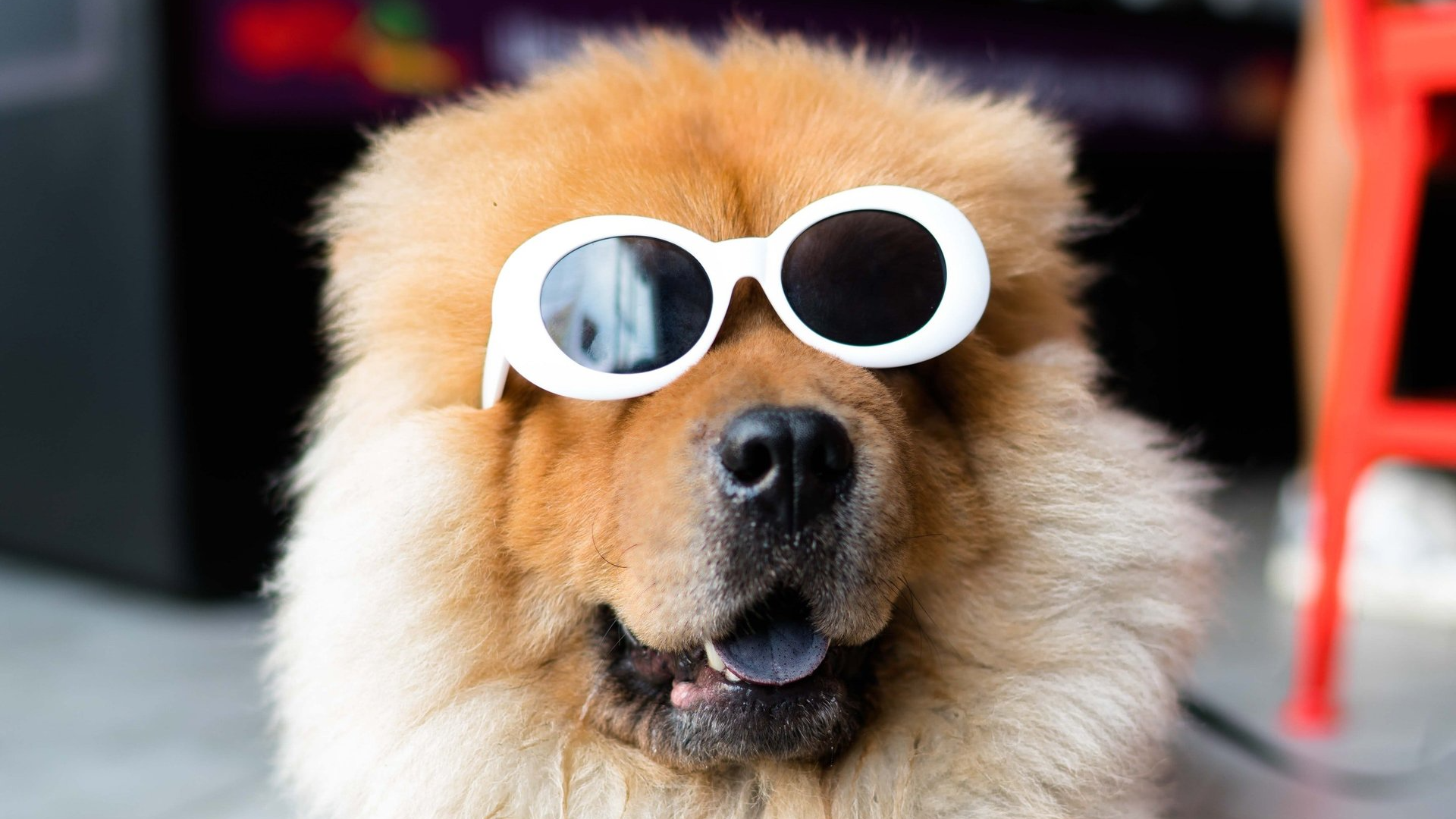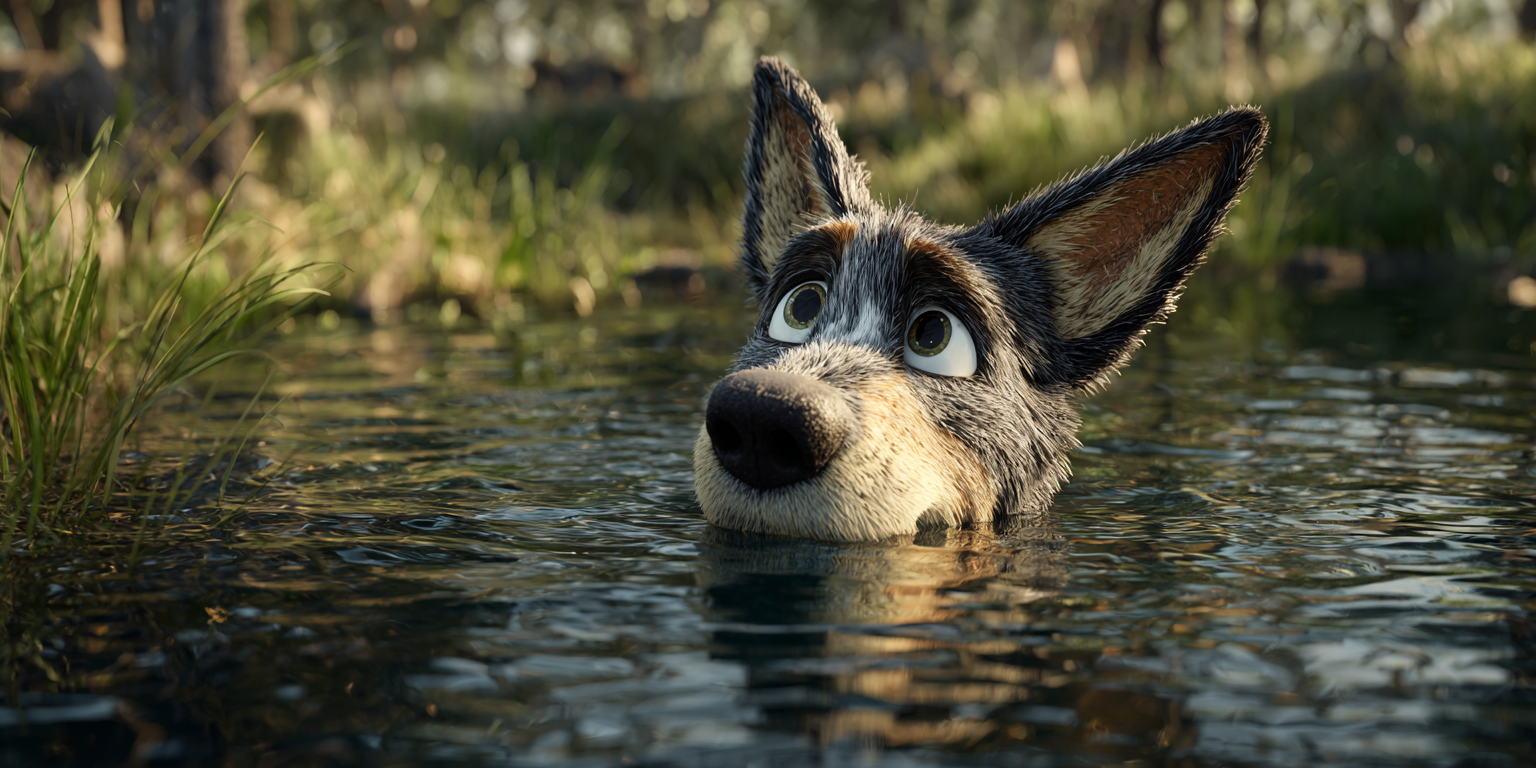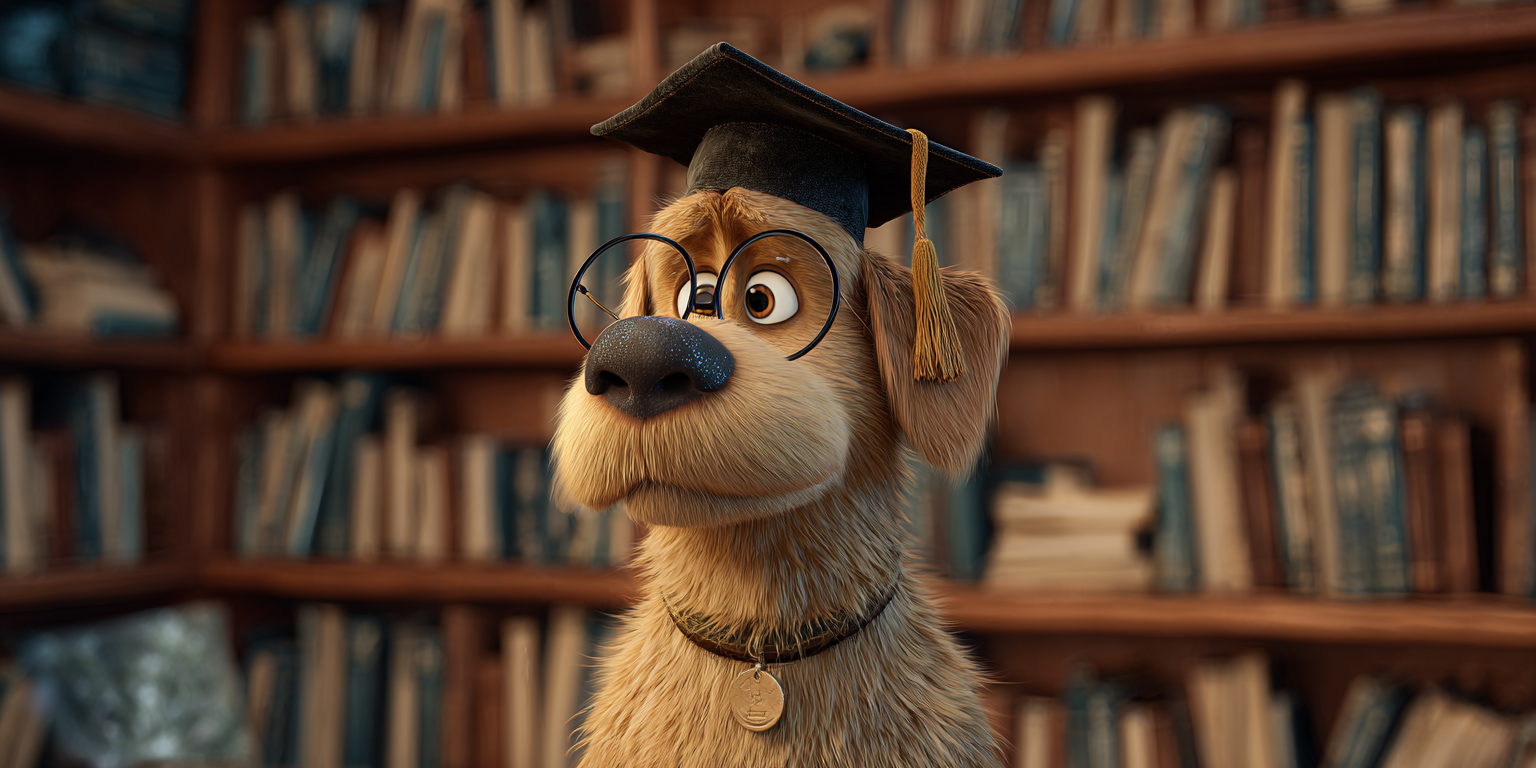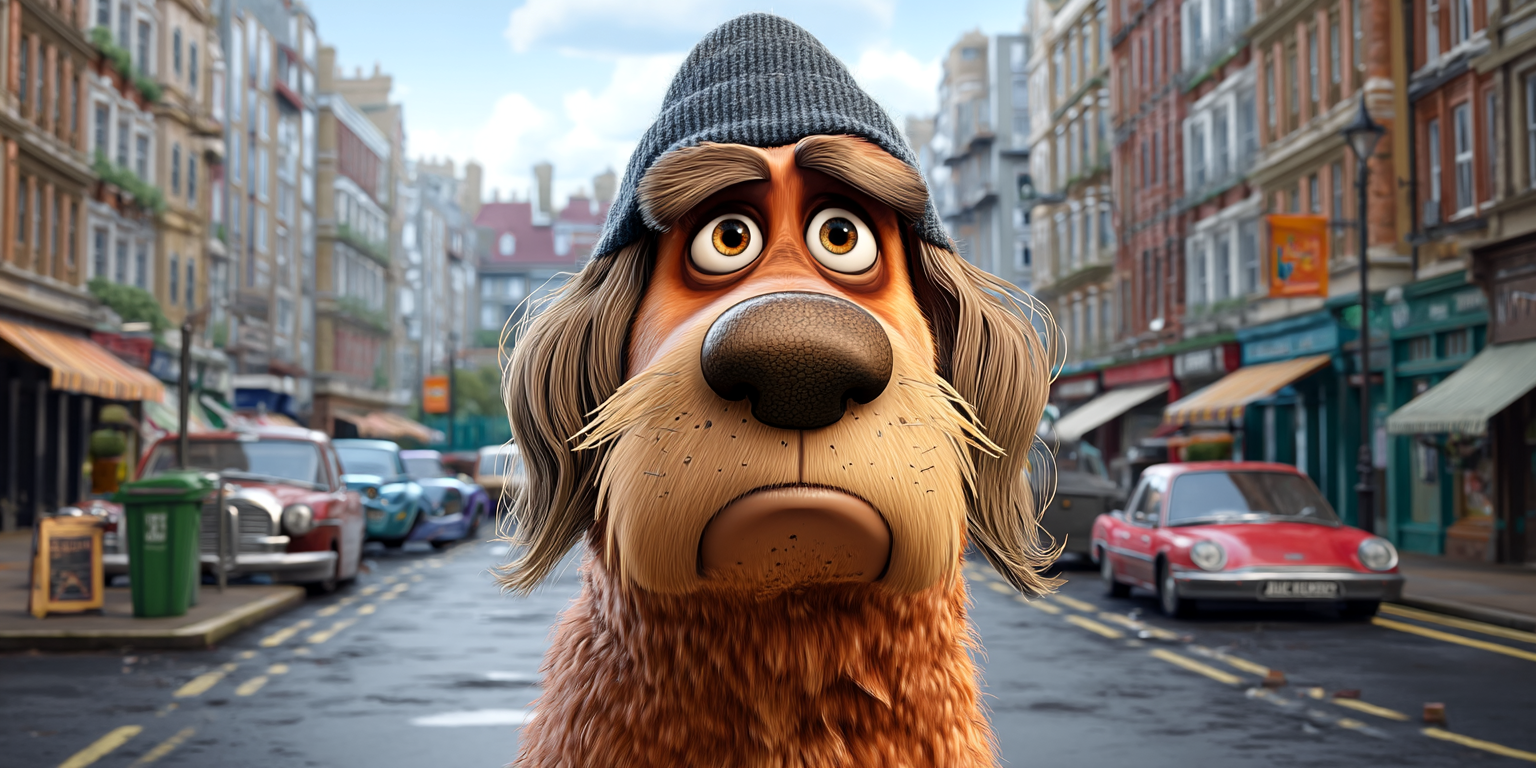Are Dogs Colour Blind?
Are Dogs Colour Blind? What do Dogs Actually See?

If you’ve ever wondered whether your furry best friend sees the world the same way you do, you’re not alone.
The question, “Are dogs colour blind?” is one of the most common curiosities in the dog-loving world. For decades, people believed dogs saw the world in plain black and white. But thanks to modern science, we now know that’s far from the truth.
So what do dogs actually see? How different is their view of the world from ours? Let’s explore what science reveals about canine vision, bust some myths along the way, and discover how your dog’s unique sight shapes their everyday adventures.
The Basics: How Humans See Colour
To understand what dogs see, it helps first to understand how we humans see the vibrant world around us.
The human eye is equipped with specialized cells on the retina called photoreceptors. There are two main types: rods, which detect light and motion, and cones, which detect colour. Most humans have three types of cones, each sensitive to different wavelengths of light—corresponding roughly to red, green, and blue/violet.
These three types of cones work together to allow us to perceive a wide spectrum of colours. When light enters our eyes, it stimulates these cones in varying degrees. The brain then interprets these signals, blending them into the rich palette of colours we enjoy every day—from the deep red of a rose to the lush green of grass.
Dogs: The Two-Cone Difference
Dogs’ eyes work in much the same way, but with one key difference: they only have two types of cones.
This means they’re dichromatic, whereas humans are trichromatic.
So what does this mean in simple terms? Instead of seeing the world through the red, green, and blue filters that we do, dogs see mainly through blue and yellow filters. As a result, their view of the world is less colourful, but certainly not black and white.
In fact, if dogs were people, we would classify their colour vision as a type of colour blindness known as red-green colour blindness (deuteranopia). Humans with this condition also have only two functioning cones, limiting their ability to distinguish between certain colours—especially reds and greens.
Busting the Myth: Dogs Do NOT See in Black and White
For years, the common belief was that dogs saw the world entirely in black, white, and shades of grey—like an old television set. This myth likely stuck because early scientists knew dogs couldn’t see colours the same way we did, and it was simpler to describe it as “black and white.”
But today, thanks to extensive research in veterinary ophthalmology and animal behavioural studies, we know that dogs can see colours—just not as many as humans. Think of it this way: while we see a rainbow with all its vivid bands, a dog sees a simpler version, missing out on reds and greens but still enjoying yellows and blues.
What Colours Can Dogs Actually See?
So what does your dog’s world really look like?
- Blues and violets stand out vividly. Dogs see these colours clearly, much like we do. That’s why many dog toys are designed in shades of blue—so they’re easy for dogs to spot against green grass.
- Yellows also appear bright. To dogs, yellow shades are very distinct, so yellow balls and frisbees are great choices for play.
- Reds, oranges, and greens all tend to blend. These colours appear as dull browns or muddy shades to dogs. So when you toss a bright red ball into the green grass, your dog isn’t seeing a striking contrast—both colours look quite similar.
Imagine standing in a field of lush green grass dotted with red flowers. To you, it’s a stunning mix of colours. To your dog, the grass may appear more yellow-brown, and the flowers don’t stand out as vividly. They rely more on shapes and motion to identify objects.
Why Evolution Made Dogs This Way
It’s natural to wonder why dogs didn’t evolve to have the same colourful vision as us. The answer lies in their ancestry and what was important for their survival.
Dogs descended from nocturnal hunters—wolves and similar ancestors—who relied more on their night vision and keen sense of smell than colour detection to hunt prey. For them, seeing well in low light was far more valuable than distinguishing subtle colour differences.
In fact, the trade-off of fewer colour receptors means that dogs have more rods in their eyes, which makes them excellent at detecting motion and seeing in dim lighting. That’s why your dog can spot a small critter moving in the twilight long before you notice anything.
How Dogs Compensate: A World Beyond Colour
Even though dogs don’t see the same full spectrum of colours as we do, their other senses more than make up for it.
- Superior night vision: Dogs can see much better in low light thanks to more rods and a special reflective layer behind their retinas called the tapetum lucidum. This is what makes their eyes shine in the dark.
- Unmatched motion detection: Because of their high rod count, dogs are incredibly good at detecting moving objects. A tiny flick of a squirrel’s tail will grab their attention instantly.
- Extraordinary sense of smell: Dogs’ noses are so sensitive that they rely heavily on scent to interpret their environment, arguably far more than on sight.
- Excellent hearing: Dogs hear a wider range of frequencies than humans do, making them attuned to sounds we might completely miss.
What This Means for You and Your Dog
Understanding how your dog sees the world can help you make smarter choices when it comes to toys, training, and even your home environment.
- Choose the right coloured toys: Blue and yellow toys are easiest for dogs to see, especially in grassy or wooded areas. If you’ve ever thrown a bright red ball and watched your dog search frantically for it, this might explain why!
- Be patient with visual signals: Dogs rely more on movement and contrast than on colour. Using hand gestures that stand out against the background, or ensuring clear movements, can make training commands easier for your dog to understand.
- Appreciate their other senses: While their colour vision is limited, your dog’s nose and ears paint a much richer picture of the world than we can imagine. When they pause to sniff the ground or tilt their heads at distant sounds, they’re gathering more “data” than any colour could provide.
Fun Fact: What About Television for Dogs?
You might have noticed some pet TV channels are designed specifically for dogs. That’s because modern TVs now refresh images fast enough (with higher frame rates) so dogs perceive them smoothly, and they often use colours—like blues and yellows—that stand out best to canine eyes.
So yes, your dog might actually enjoy a bit of television, provided it features the colours they can see and lots of interesting motion!
So, Are Dogs Colour Blind?
The best answer is: kind of.
Technically, if dogs were humans, we’d classify them as having a form of colour blindness known as dichromacy, similar to some people who lack one type of cone. But that doesn’t mean dogs see a boring world.
Instead, they see a simpler palette made up mostly of blues and yellows, while reds and greens blend into muted shades. And thanks to their outstanding motion detection, night vision, and especially their superpowered sense of smell, dogs experience their surroundings in ways we can hardly begin to imagine.
A Final Thought
Next time you admire a colourful bouquet of red roses or take in a green summer landscape, remember that your dog sees it quite differently—but it’s no less vibrant or exciting to them. Their world might be painted with fewer colours, but it’s rich with scents, movements, and sounds we can’t begin to appreciate.
So whether it’s chasing a blue ball across the yard or following an intriguing scent on a morning walk, your dog’s life is full of joy and discovery—just in their own uniquely beautiful way.




